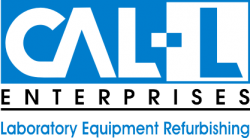WINNIPEG — Long before Winnipeg had ever been incorporated as a city, its largest river defined and shaped the landscape.
The Red River has, for generations, been at the cultural and economic heart of Winnipeg. Archaeological evidence of human life, dating back over 6,000 years has been found on the riverbanks. It played a vital role for Manitoba’s indigenous peoples for trade, fishing and transportation.
Today, the Red River continues to be used for activities in every season; from boating in the summer to ice skating in the winter.
But Winnipeggers have a complicated relationship with the river too. The popular perception of the Red is one of pollution; full of raw sewage, junk and at times, dead bodies.
In a recent poll conducted by Global News Winnipeg, 91 per cent of respondents said they would not swim in the waters of the Red River. Seventy-six per cent said they would not consume fish caught in it.
There is some truth to the perception – the City of Winnipeg’s Water and Waste Department has recorded nearly 200 million litres of raw sewage leaking into the river in the past decade.
The question posed by Global News is simple: is the water in the Red River safe? Would you get sick if you ingested the water? And what kind of materials are really in the water?
To ensure impartiality, the testing of the water was done in three separate parts. First, Global News reporter Adrian Cheung collected the water samples directly from the Red River from three different areas: St. Adolphe, south of Winnipeg; at The Forks and further upstream in Grand Beach, where the river empties into Lake Winnipeg.

“I would look to things such as E. coli because on the landscape, we have agriculture with livestock. And we have people living [by the river], releasing their waste,” said Hanson, whose work has focused on water quality and how bacteria and contaminants can affect ecosystems.

After poring over the contents of the lab’s analytical report, Hanson was able to come to a conclusion of how safe the water in the Red River is.
The verdict: while it may not look appealing, the water is generally safe.
“None of [the water samples] exceeded any kind of [contaminant] values from Environment Canada, USPCA, where you would have concerns for human health or for ecosystems as a whole,” Hanson said.

In Canada, the maximum acceptable concentration of lead content in water is 0.010 mg/L (10 parts per billion). The water at the Forks measured at 0.00087, and none of that water goes into the city’s drinking supply.
However, higher levels of E. coli – a potentially deadly bacteria – were detected within the city. But Hanson said it is also not at a level that would be considered hazardous to human health. He attributes the finding to increased human activity in the city, compared to where it is naturally filtered by the time the water travels to Lake Winnipeg.
Hanson says if you use the river for activities, don’t worry about ingesting a little water.
“Don’t go out there drinking litres of water – you wouldn’t do that anywhere. But people should be out there. Ice fishing, canoeing, boating, whatever it is.”
Ultimately, environmental experts say while the water is far from crystal clear, it’s not dangerous to human health. And by the time water from the Red is emptied into Lake Winnipeg, most contaminants have become so diluted, there are only scant traces of it left.


